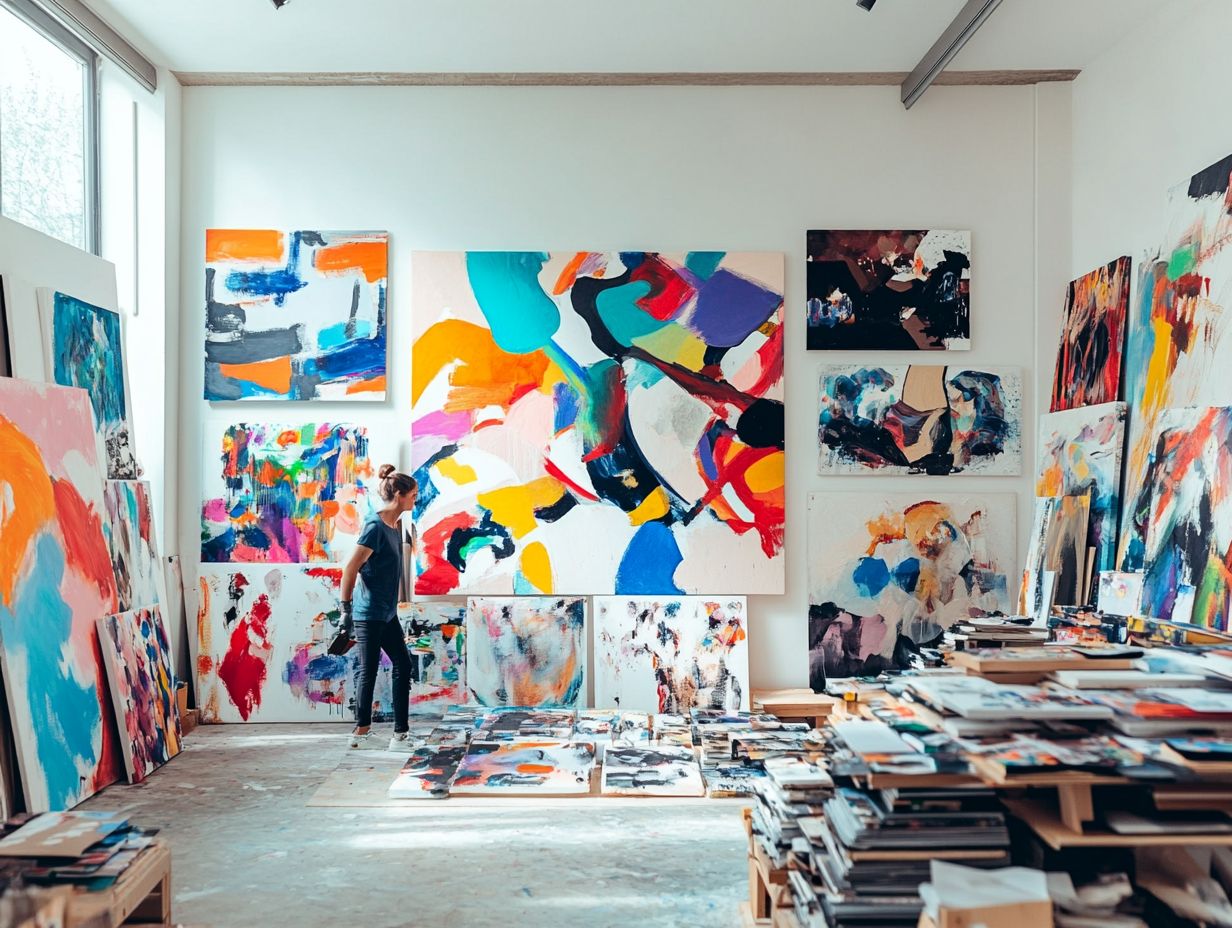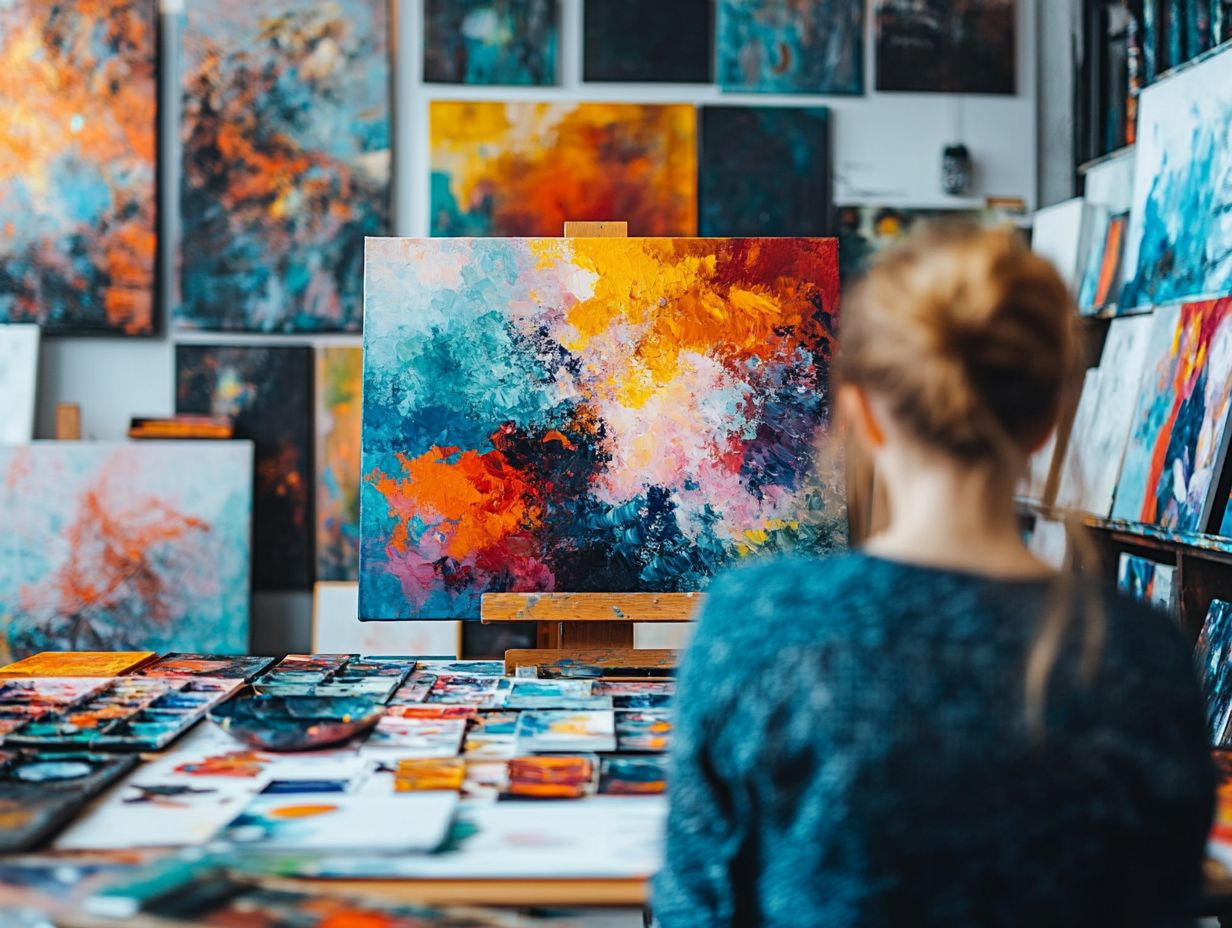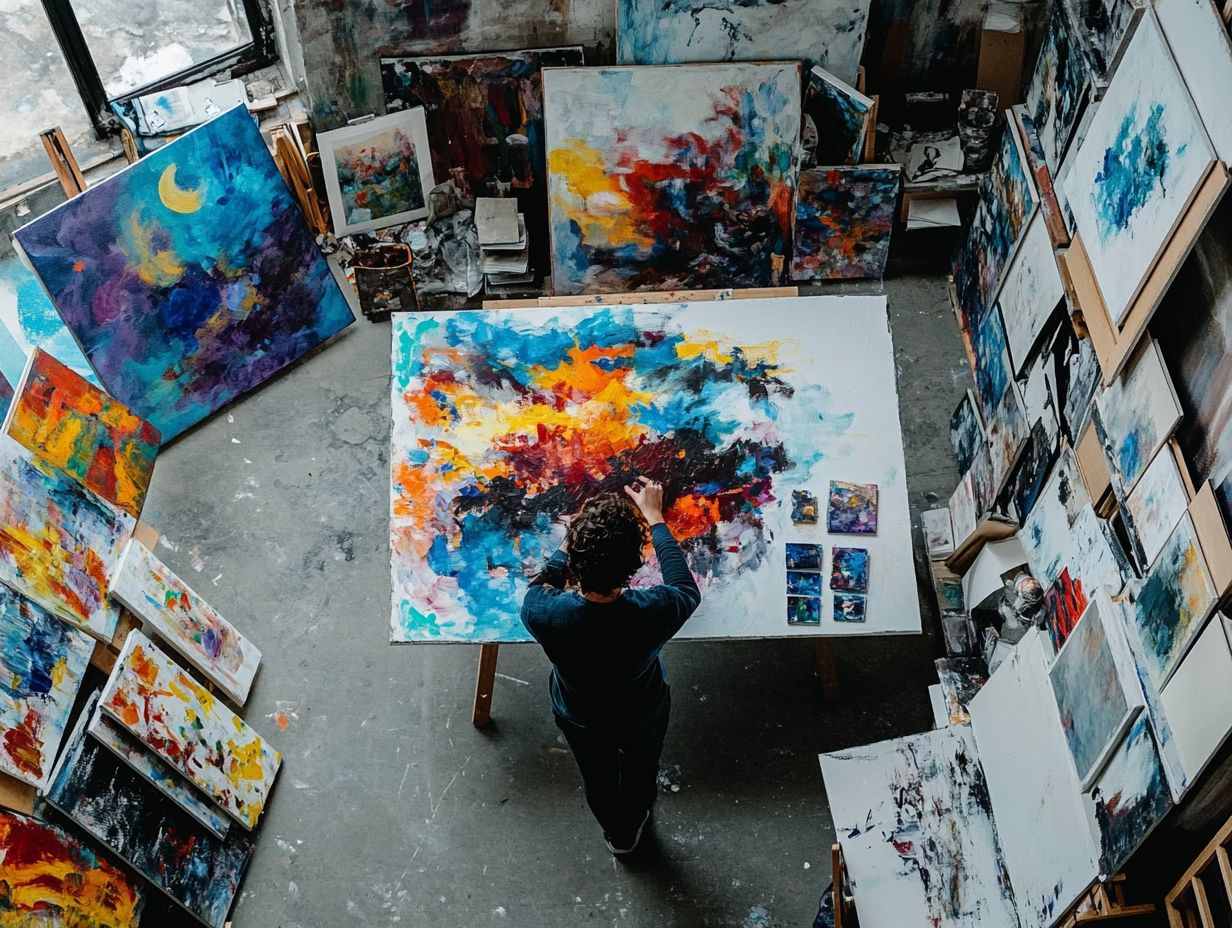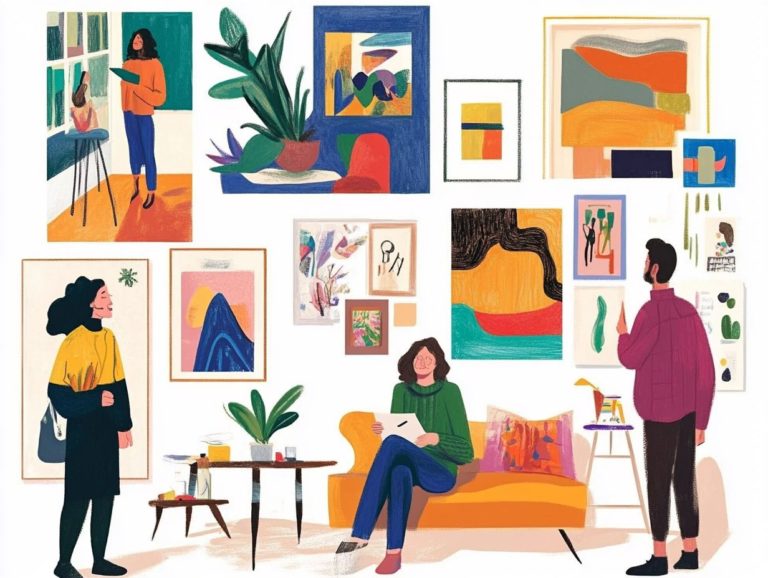Art Collecting and Investment: A Synergy
Art collecting is a mix of creativity and investment potential.
Whether you re a seasoned collector or just dipping your toes into the art world, grasping the fundamentals of art collecting is vital. This exploration delves into the historical performance of art as an investment, the myriad factors that influence market value, and practical advice for building and managing your collection.
Find out how art can enrich your life and boost your investment portfolio, fostering a seamless synergy between aesthetic enjoyment and financial growth.
Contents
- Key Takeaways:
- The Art of Collecting
- The Investment Potential of Art
- Building a Successful Art Collection
- Managing and Protecting Your Art Collection
- The Synergy Between Art Collecting and Investment
- Frequently Asked Questions
- What is the connection between art collecting and investment?
- Why is art considered a good investment?
- What factors should you consider when collecting art as an investment?
- Can art collecting be profitable?
- Are there tax benefits to collecting art as an investment?
- Is art collecting suitable for everyone?
Key Takeaways:

- Art collecting is more than just a hobby; it involves understanding the basics of the art world and the potential for investment.
- Art has shown historical growth and trends in value, influenced by factors such as artist popularity and market demand.
- When building a successful art collection, it is important to carefully select and acquire pieces while considering potential investment value.
- Proper management and protection strategies, such as insurance and preservation, are essential for maintaining the value of an art collection.
- The synergy between art collecting and investment can provide unique benefits and enhance overall investment portfolios.
The Art of Collecting
The art of collecting goes beyond simple acquisition; it embodies a profound appreciation for creativity and cultural significance.
As you embark on your journey as an art collector, you ll navigate diverse art sectors, from contemporary pieces to Old Masters, all while balancing emotional fulfillment with investment potential.
This duality reveals how art investments, such as collecting street art, can enhance financial portfolios, showcasing the unique interplay between personal passion and the appreciation of tangible assets.
In the dynamic art market, high net worth individuals those with significant financial resources like you face careful decisions with each acquisition, rooted in both aesthetic value and strategic financial consideration.
Understanding the Basics of Art Collecting
Understanding the fundamentals of art collecting requires you to appreciate both the emotional and financial perspectives that drive art buyers and investors alike.
Your journey begins with recognizing the motivations behind art collecting, which can range from personal passion and aesthetic enjoyment to strategic investment choices.
You ll find that collectors often fall into distinct categories. Some purchase pieces primarily for their enjoyment, while others focus on enhancing their financial portfolios through market savvy.
The significance of art appreciation cannot be overstated; it anchors you in a rich tapestry of culture and history, informing your choices along the way.
As you navigate the art economy, keep in mind that factors such as market trends and investment strategies will significantly shape your decisions, influencing not just what you collect but also how you perceive the value of your acquisitions over time.
The Investment Potential of Art
The investment potential of art has become increasingly evident, with art investments emerging as a legitimate asset class that can deliver impressive returns.
Recognizing this trend allows you to explore a unique avenue for diversifying your portfolio and capitalizing on the intrinsic value that art offers.
Historical Performance and Trends

Analyzing the historical performance and trends in the art market offers you invaluable insights into investment strategies that can significantly enhance your art collection portfolio.
By looking into shifts that occurred decade by decade, you can gain a clearer understanding of how external factors such as economic recessions and booms have shaped the market landscape.
For instance, the post-war art boom of the 1950s and the emergence of contemporary art in the 21st century stand out as pivotal moments that have redefined what makes an investment worthwhile.
Notable auctions held by Sotheby s and Christie s often act as barometers for market health, demonstrating how high-profile sales can sway broader investment decisions, especially during times of financial uncertainty.
By tracking these shifts, you not only refine your current purchasing strategies but also position yourself to anticipate future trends in art investment, ensuring you remain ahead of the curve.
Factors That Affect Art Market Value
Several factors influence the value of art in the market. Scarcity, the artist’s reputation, and economic uncertainty all play a crucial role in pricing.
Scarcity drives demand. When art is limited, prices can soar.
An artist’s reputation is also key. Established names often command higher prices than emerging talents due to their proven track record.
Economic conditions complicate the landscape. During recessions, spending on art may decrease, while a booming economy can boost sales.
Valuation services assess these influences. They use various methods to determine an artwork’s fair market value, considering trends and historical sales data.
Building a Successful Art Collection
Building a successful art collection involves making smart choices that reflect your taste and financial goals. This ensures emotional fulfillment and aesthetic enjoyment.
Tips for Selecting and Acquiring Pieces
To elevate your art selection experience, know where to discover art and ensure its authenticity. Familiarizing yourself with styles and artist reputations is essential.
A well-curated gallery provides valuable insights into artists’ backstories and the significance of their work. Attending art fairs lets you engage with a wide array of pieces.
To navigate acquisitions smoothly, seek documentation of an artwork s history. This confirms authenticity and can enhance future value.
Managing and Protecting Your Art Collection

Managing and protecting your art collection is vital for preserving its value. Art insurance and preservation strategies are key responsibilities of any collector.
Insurance and Preservation Strategies
Art insurance and preservation are crucial for protecting your collection. Many collectors underestimate the need to customize their insurance policies.
Consider factors like climate control and specialized storage conditions. Comprehensive coverage safeguards your investment and allows precise valuation through regular appraisals.
Maintaining optimal environmental conditions greatly enhances each piece’s integrity. Prioritizing these strategies ensures the longevity and appreciation of your cherished artworks.
The Synergy Between Art Collecting and Investment
The synergy between art collecting and investment shows that art can be more than a passion; it can provide emotional fulfillment and serve as a lucrative asset in your portfolio. For insights on this balance, explore the art of collecting.
How Art Collecting Can Enhance Investment Portfolios
Art collecting can significantly elevate your investment portfolio by diversifying asset classes and creating unique opportunities for liquidity, particularly highlighted in the rise of collectible art investments, which refers to how easily an asset can be bought or sold in the art world.
Engaging in art investment infuses your portfolio with creativity and cultural significance while also offering a strategic buffer against market downturns. Unlike traditional financial assets, art has a remarkable ability to retain its value and sometimes even appreciate when stock markets fluctuate. This makes it a reliable hedge for savvy investors like you.
This alternative asset class creates robust liquidity pools, allowing you to access different financial resources whenever the need arises.
Investing in art also provides a sense of personal satisfaction and a deeper connection to culture, enriching your overall investment experience beyond mere financial returns.
Frequently Asked Questions

What is the connection between art collecting and investment?
The connection between art collecting and investment involves both emotional and financial aspects. Art collecting can be a passion and a form of self-expression while also presenting potential investment opportunities.
Why is art considered a good investment?
Art is often seen as a good investment because it has the potential to increase in value over time. Unlike stocks or real estate, the value of art is not directly tied to the economy, making it a more stable option.
What factors should you consider when collecting art as an investment?
When collecting art as an investment, consider the artist’s reputation, market demand, the quality and condition of the artwork, and current trends in the art market. It’s also essential to have a long-term investment strategy and diversify your collection.
Can art collecting be profitable?
Yes, art collecting can be profitable, but it’s not guaranteed. Like any investment, it carries risk. Conduct thorough research and consult with experts before making any investment decisions.
Are there tax benefits to collecting art as an investment?
Yes, there can be tax benefits. In some countries, owning and selling art may be taxed at favorable capital gains rates. Additionally, donating art to non-profit organizations or museums may provide tax deductions.
Is art collecting suitable for everyone?
No, art collecting may not be suitable for everyone. It requires significant knowledge, research, and financial resources. Consulting with a financial advisor is crucial before making any investment decisions.
Start your art investment journey today and see how it can enhance your financial future!
Disclaimer: Investing in art involves risks, and it is important to thoroughly research and understand those risks before making any decisions.





